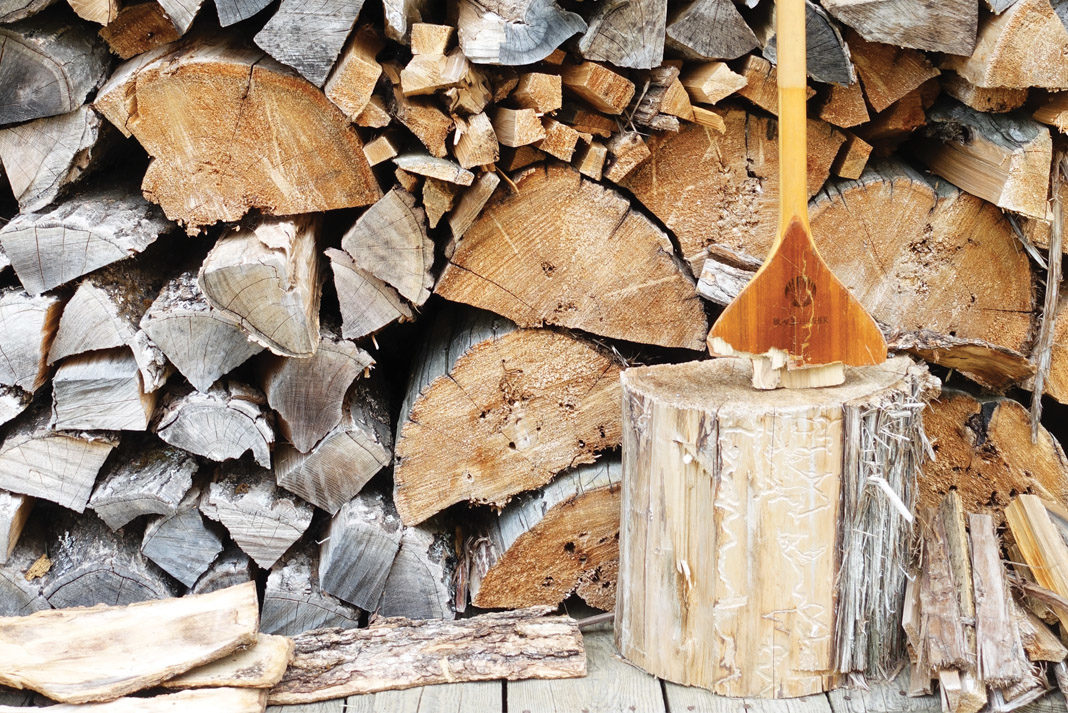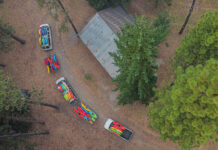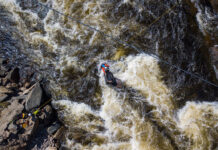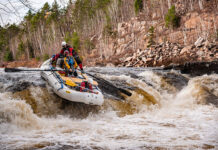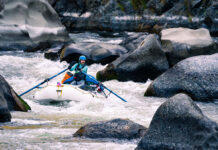I broke my paddle. If upon reading that line, you feel a sinking, sad feeling, then you have likely broken a paddle too. If it was a paddle you’d had for a long time you can relate to my deep sense of loss. You get it.
This paddle was made of basswood and maple, 58 centimeters long. It was not fancy. It was a single-blade canoe paddle, which served double duty canoe guiding and paddle rafting.
The day I bought it I dedicated one of my best woolen socks and pulled it over the walnut T-grip for a lifetime of protection from rough shuttle roads and the travel logistics of a guide’s transient lifestyle. That was 1995. The very same sock is still on the t-grip today.
It has steered me through stages of my life and landed me where I am today. This paddle has shaped what I believe and who I am
Even though last spring the blade broke off just below the throat and was lost in the shallow swift currents of the Opeongo River. The shaft with t-grip and sock lean in my gear shed and probably always will.
Twenty-six years of service, all but the last couple of which were full-time, almost year-round, pulling water and moving boats downstream. How many river miles is that? I have a hard time even guessing. It is hard not to be sentimental, considering the amazing places that this paddle has taken me. We have been on more adventures together than any of my closest friends or family.
If you consider guiding as my trade, then this paddle was more than my tool. It turned my muscle energy into forwarding motion. It turned my intention to go left or right into a reality. This paddle has moved me through a wide variety of landscapes I feel very fortunate to have visited.
It has steered me through stages of my life and landed me where I am today. This paddle has shaped what I believe and who I am. In the 1960s, renaissance man Michael Polanyi, medical doctor, chemist, economist, and philosopher, wrote about how our tools become an extension of ourselves.
The paddle teaches us to feel the water
We paddlers talk about how we “feel” the water. Technically it is the paddle that we are feeling and it is the forces of the rivers’ currents, acting against our paddle, that we sense against the palms of our hands. Our hands remain dry, yet we feel the water. A paddle, in this case, becomes the means by which we interpret our river environment.
“The way we use a hammer or a blind man uses his stick shows in fact that in both cases we shift outward the points at which we make contact with the world. While we rely on a tool, these are not handled as external objects,” wrote Polanyi. “We pour ourselves out into them and assimilate them as parts of our existence.”
Polanyi differentiates novices who “use” tools, from mastery, which involves adopting and assimilating a tool as an extension of one’s body. While “master” is an adjective I’ve never used to describe myself, my sense of loss is greater than a novice would expect from just a broken paddle.
I’ve tried several since I broke my one true paddle. None of them are quite right. I have half a dozen other paddles, some of which are very nice indeed. Yet, they feel awkward and clumsy in my hands like dancing with a new partner after a lifetime dancing with one true love. The music and steps are the same but the magic is not.
Hundreds of thousands of strokes on different rivers at different times mean no other paddle will ever feel the same. I am unlikely to accumulate as many river miles in the rest of my days as I did in the first 15 years guiding before a real job, wife, and family.
Mechanically, these new paddles enter the water just as gracefully. I know they have the same effect on a hard pry. Existentially, however, they are not a part of who I am.
Yes, I can feel the water, but that feeling is dull, empty and without history. I’m sure when I settle on another paddle I will eventually get used to it. After thousands of forward strokes, I may even grow to enjoy it. But it can never be the same.



